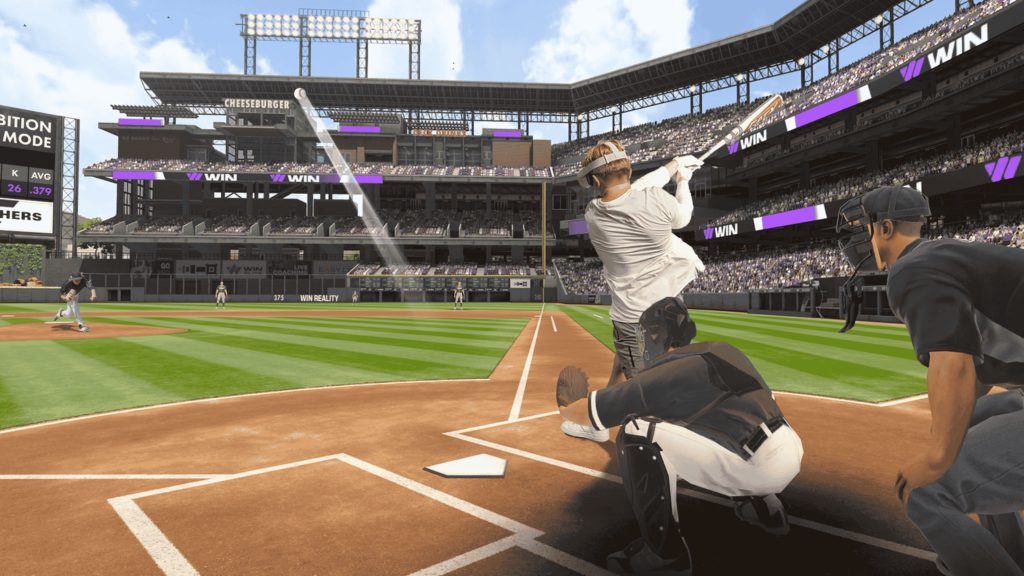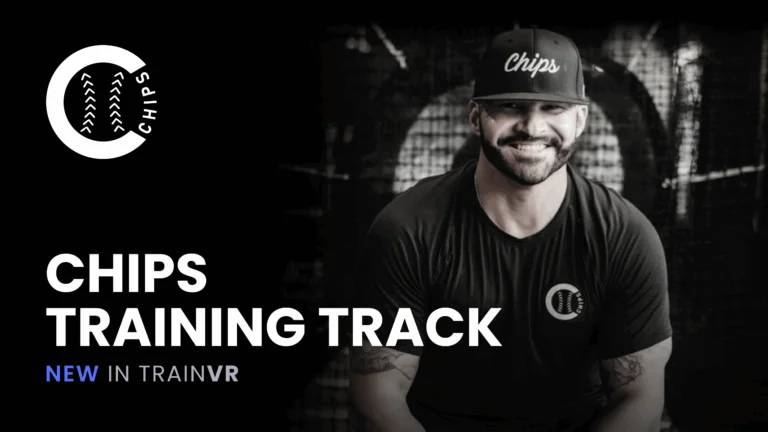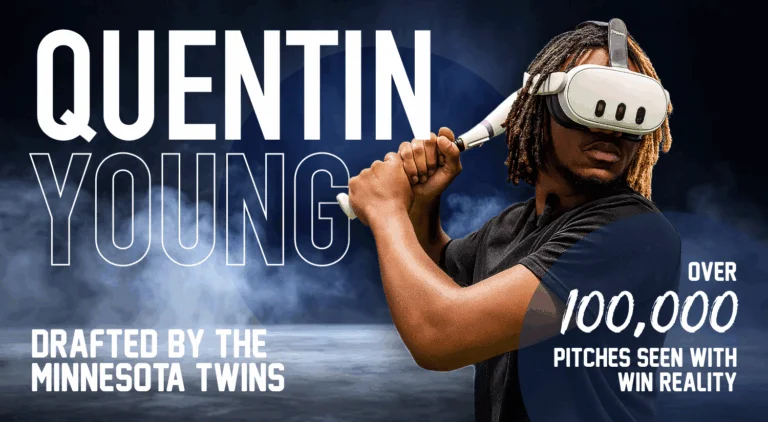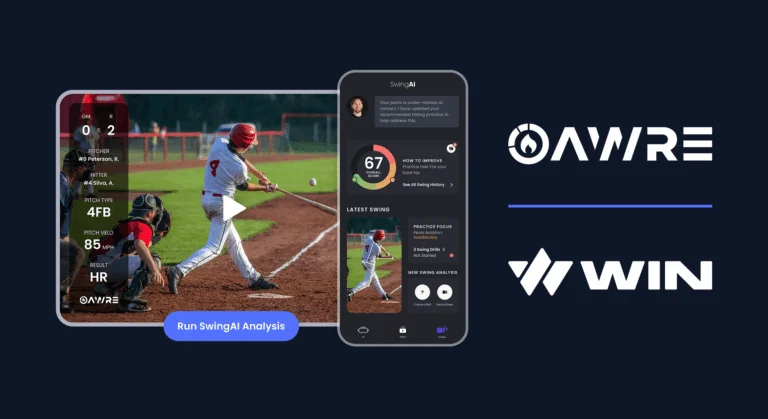For older hitters, click here for the best drills to help 9-10 year olds. Click here for an overview of WIN Reality’s age-by-age curriculum.
One of the most critical stages in a hitter’s skill development occurs at 7-8 years old. At this age, hitters begin to build the athleticism and hand-eye coordination that will carry them through their athletic careers. Most young players don’t require detailed coaching; rather, they need consistent repetition in practice sessions and the chance to problem-solve and self-correct on their own. This approach allows them to develop natural instincts, self-awareness, and refine their skills over time.
Kids in this age group typically have the natural ability to self-organize their bodies in efficient and powerful ways, leading to good swings and long-term results. Over-coaching can disrupt this natural process, stiffening their movements and hindering their development. Knowing how to guide hitters at this stage—what drills to implement, the environments to place them in, and maintaining a consistent, well-structured plan—is essential for significant improvement.
The Short Answer: Our favorite hitting drills for 7-8 year olds are:
- High Tee Drill
- Deep Tee Drill
- Three Plate Drill
- Inside/Outside Drill
- Hitting with a Skinny or Wiffle Ball Bat
- Foot Strike Drill
Hitting Skills for 7-8 Year Olds to Focus On
At ages 7-8, youth baseball players are building the foundation of skills that will support their long-term development. These years are critical for developing essential hand-eye coordination, timing mechanisms, and learning the fundamentals of hitting. While detailed coaching isn’t always necessary, certain skills should be the focus to help young hitters improve while keeping practice fun and engaging.
At this age, making drills enjoyable is just as important as getting better. Young players need to love the game to stay motivated and interested in improving. Whether it’s using tee drills, front toss, competitions, or game-like scenarios, the goal is for kids to develop key hitting skills while having fun and enjoying practice. When players enjoy the process, they remain engaged and more likely to put in the effort needed for long-term growth.
With that in mind, here are the key skills to focus on for young hitters:
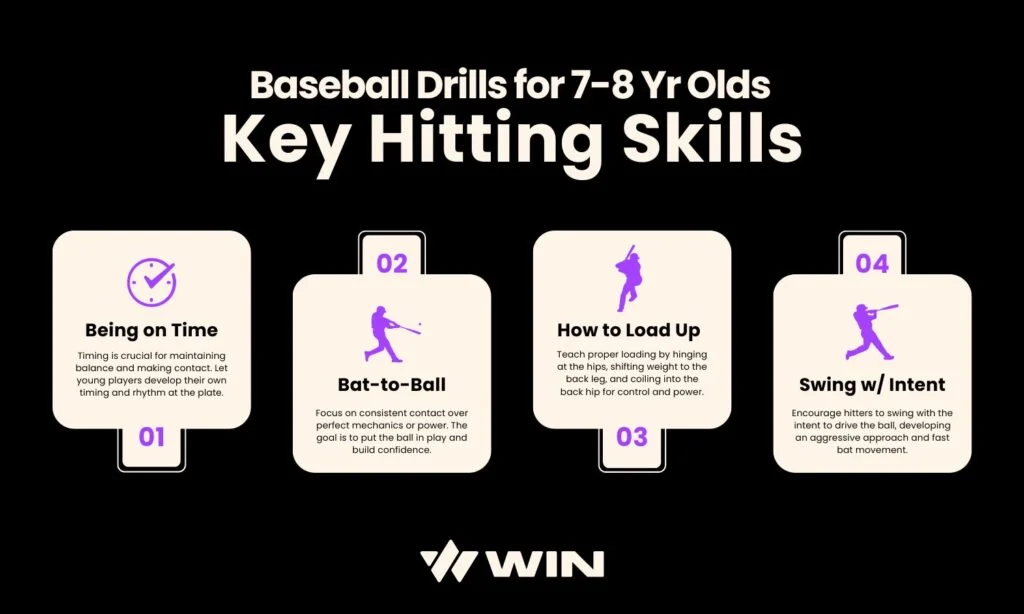
Being On Time Consistently
One of the most important aspects of hitting is timing, which goes hand-in-hand with maintaining balance in the batter’s box. Without good timing, a hitter will struggle to be balanced and make contact. At this age, it’s essential to let kids find their own timing mechanisms and rhythm at the plate.
Bat-to-Ball Skills
The ability to make consistent contact with the ball is crucial for young hitters to develop confidence and enjoy the game. The primary goal at this stage is not perfect mechanics or hitting for power, but simply putting the ball in play. The more often young hitters make contact, the more success and fun they will have.
How to Load Up
To build the foundation for power and adjustability to different pitch locations and speeds, young hitters need to focus on loading up properly. This involves hinging at the hips, shifting their weight into the back leg, and coiling up into their back hip. This should feel natural and allow the hitter to gain control and create power from their lower half.
Swinging with Intent
As hitters progress, it’s important to train them to swing with intent—focusing on driving the ball with every swing, even if they aren’t hitting for power yet. This intent helps develop an aggressive approach at the plate and teaches the hitter to move the bat and body fast, which is vital for growth at this age.
While players are developing these foundational skills, here’s a short guide for parents and coaches on what to look for in hitters at this age and what not to be concerned by:
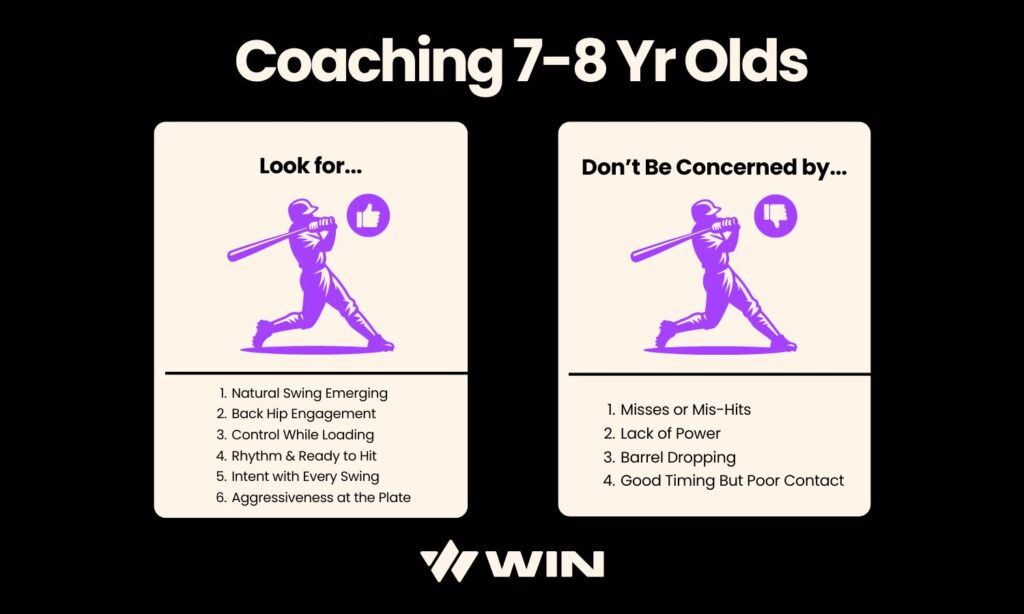
What to look for:
- Allow the hitter to be free and use the timing mechanisms that come natural to them.
- Make sure the hitter gets into their back hip and doesn’t sway back.
- The hitter is gaining control from loading. You can see the rear leg back pocket on their pants turn towards you as they load up, from the pitcher’s perspective.
- The hitter is creating rhythm and is ready to hit.
- There is intent to drive the ball with every swing.
- If the hitter is swinging at hittable pitches, at this age we should be training aggressiveness and not necessarily being overly selective at the plate. Hitters should not be letting strikes go by.
What not to be concerned by:
- Don’t be concerned by misses or not squaring the ball up. More than likely it is a coordination issue that will go away with time and reps. The best way to check if it’s timing or hand eye, is if the hitter can consistently hit the ball well off of the tee or not.
- A lack of power. Hitters will develop power as they get more reps, become more coordinated, and grow.
- The barrel dropping due to a lack of strength.
- They are on time but not making quality contact. The hitter likely just needs more reps.
Timing, bat-to-ball skills, loading up, and intent are the pillars of hitting development for 7-8 year olds. By focusing on these fundamentals, and keeping drills fun and age-appropriate, young players can build the skills they need to succeed while maintaining their passion for the game.
GET STARTED WITH WIN REALITYThe Best Hitting Drills for 7-8 Year Olds
The best drills for players at this age are those that allow hitters to use their athleticism to solve problems. This can be achieved through various environments, competitions, or game situations. Such drills allow for productive practices while keeping it both fun and engaging, while effectively improving baseball skills and setting young hitters on a path to success.
Here are our favorite youth baseball drills for 7 and 8 year olds to do:
Drill #1: High Tee Drill
The High Tee Drill is perfect to help hitters improve their ability to hit high pitches. It’s especially beneficial for players who have a steep path that prevents them from consistently squaring the ball up. Hitters will develop quicker, tighter entry into the zone which will allow them to catch up to faster pitching.
Drill #2: Deep Tee Drill
The Deep Tee Drill is a fun drill that helps hitters develop confidence in catching the ball deeper in the hitting zone. This will help establish bat path that enters the hitting zone early, allowing for cleaner, more consistent contact. It’s also ideal for players who struggle with quick, tight entry into the zone, getting on plane early, and handling faster pitching.
Drill #3: Three Plate Drill
The Three Plate Drill is designed to help hitters improve their timing and create a foundation of adjustability. It teaches hitters to stay inside the ball, staying short to and long through the ball. This drill is especially useful for players who struggle with controlling their load, tend to drift forward, or have difficulty getting on plane with different speeds.
Drill #4: Inside/Outside Drill
The Inside/Outside Drill is great for hitters who struggle with adjusting to pitch sequences that go from in-to-out or out-to-in. Hitters will improve the depth and direction of their swing by doing this.
Drill #5: Hitting with a Skinny or Wiffle Ball Bat
Hitting with a Skinny bat or a Wiffle Ball bat is a great way to improve your bat to ball skills because it forces the hitter to be more precise with their ball striking.
Drill #6: Foot Strike Drill
The Foot Strike Drill is ideal for hitters who struggle with loading and getting into good positions to hit on time. It will teach proper swing sequencing by emphasizing firing from the center of the body first. This drill also focuses on maintaining proper hitting posture over the plate, helping hitters stay through the ball for cleaner contact.
How WIN Reality Can Help Your Hitting Development
In conclusion, developing these key hitting skills at a young age sets the foundation for long-term success in baseball. Alongside fun baseball drills focusing on timing, bat-to-ball contact, the load, and swinging with intent, one of the most valuable things a young hitter can do is to take plenty of swings and see as many pitches as possible. This allows hitters to build up a wealth of experience and will go a long way with their timing and swing decisions as they go further in the game.
To speed up your young hitters’ learning curve, consider integrating WIN Reality’s virtual reality training products into your baseball practice routine. WIN Reality provides a cutting-edge platform that allows players to see pitches and take swings in a virtual environment, simulating real baseball game scenarios. This immersive experience helps hitters practice their timing, improve their pitch recognition, and build up their in-game experience in a controlled setting. Explore WIN Reality’s pricing options to find the best fit for your training needs and take your hitting practice to the next level. Embrace this innovative tool to support your young players’ development, boost their confidence, and watch them excel at the plate.
GET STARTED